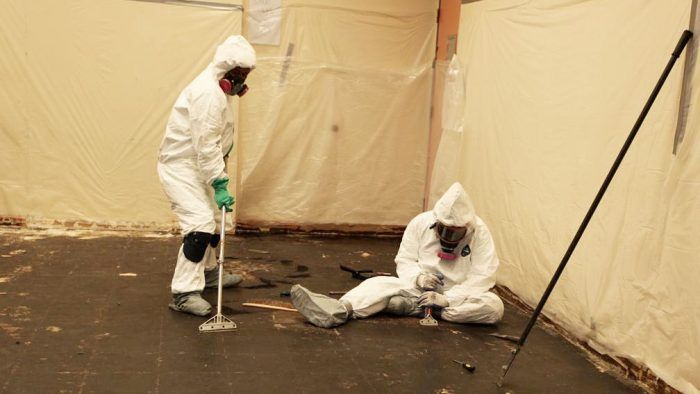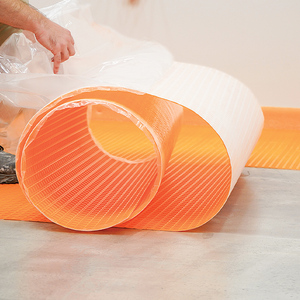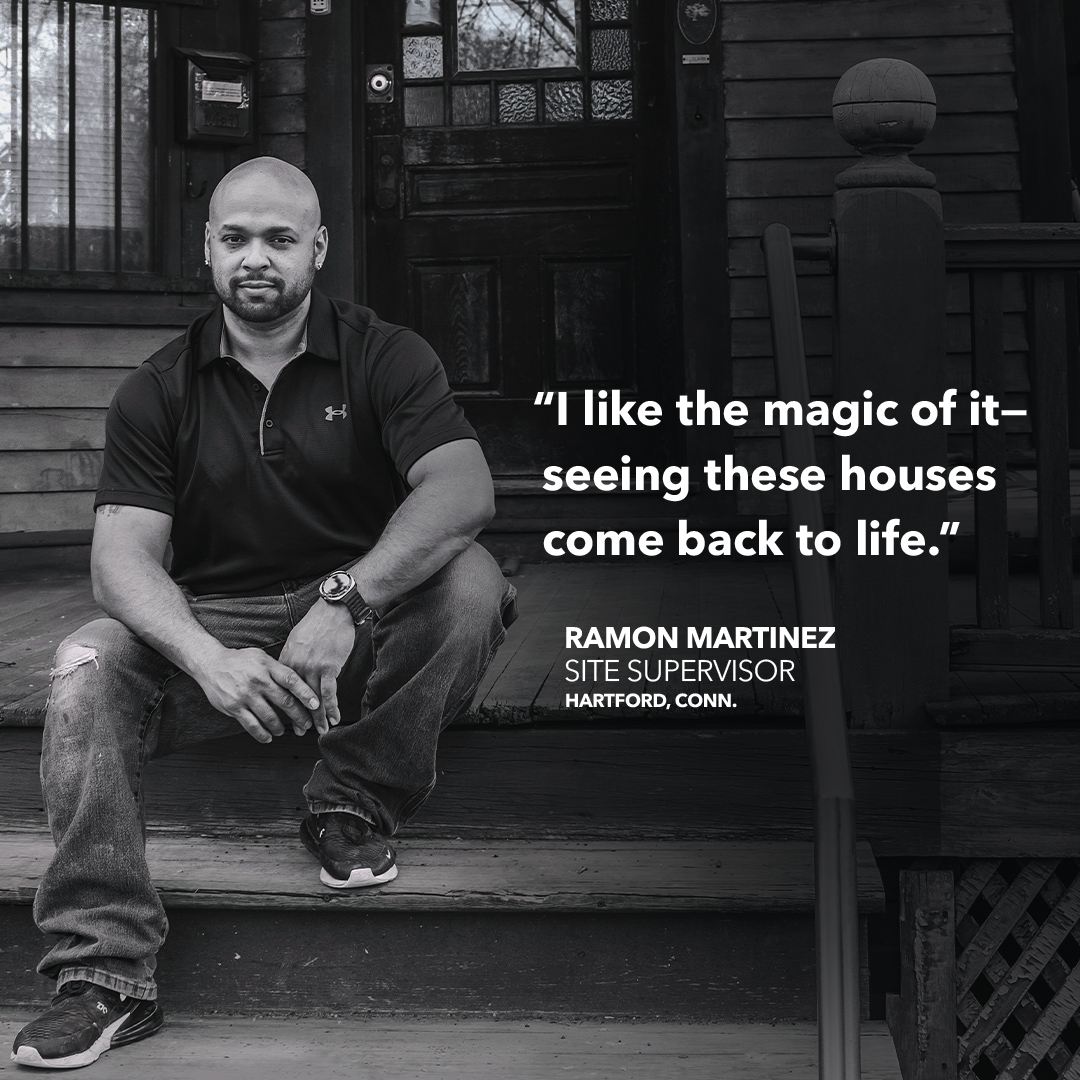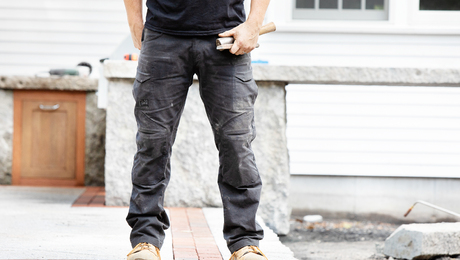Handling Asbestos Tile
A homeowners wonders which is smarter: removing or encapsulating the vinyl-asbestos tiles on his basement floor.

About 400 sq. ft. of my concrete basement floor is covered with vinyl-asbestos tiles. The tiles were carpeted over for many years, but because of water damage, the carpet had to be removed. What remains is a floor with a combination of tile and concrete covered with black mastic where loose tiles were removed. I know the gold-standard solution is to hire a remediation company to remove the tiles and mastic, but that’s quite expensive. I’m considering simply installing a floating floor over the remaining tile and mastic. Is this an appropriate solution, or are there better ways to approach the problem?
—Mark von Wehrden via email
Remodeling contractor Andy Engel replies: This is a question no one wants to answer. The reason is obvious: liability. The EPA strongly recommends hiring a trained asbestos professional, but as you’ve found, that’s expensive. The EPA also says that as long as the asbestos-containing material is in good shape, the best approach is usually to leave it alone or encapsulate it.
You’ve already handled the part that the EPA is concerned about—removing the loose tiles, and, I’m sure, disposing of them in a safe and legal manner. From this point, encapsulation is simple. Almost anything you lay over the remaining tiles will protect them from wear and minimize the chance of asbestos fibers becoming airborne.
As long as the remaining tiles are well attached, there’s no reason not to install a floating floor over them— either a snap-together engineered floor or a double layer of plywood fastened together as a subfloor. Over that, you could install virtually any type of flooring you want except tile. You can also skip the plywood and glue down a wood floor—I checked with Bostik, and their GreenGrip adhesive can be used to adhere engineered-wood flooring to sound asbestos tiles. Use a leveling compound first to fill in where you’ve removed tiles and you should be good to go.
From Fine Homebuilding #297
More about home health hazards
Buying a Vermiculite-Insulated House – Asbestos exposure from vermiculite insulation can lead to asbestosis, lung cancer, and mesothelioma, which can show up years or even decades after exposure.
Podcast Episode 181: Ethical Business Practices, Pass-Through Windows, and Cutting Asbestos Shingles – The Fine Homebuilding editors talk about doing right by your clients, opening up a kitchen to the outdoors, following EPA guidelines when removing asbestos siding, and more.
Lead-Paint Safety, at Home and on the Job – Whether you’re remodeling an older home or just living in one, knowing how to minimize exposure to lead will help you to keep you and your family healthy.
image: NAVFAC on Wikimedia.org





























